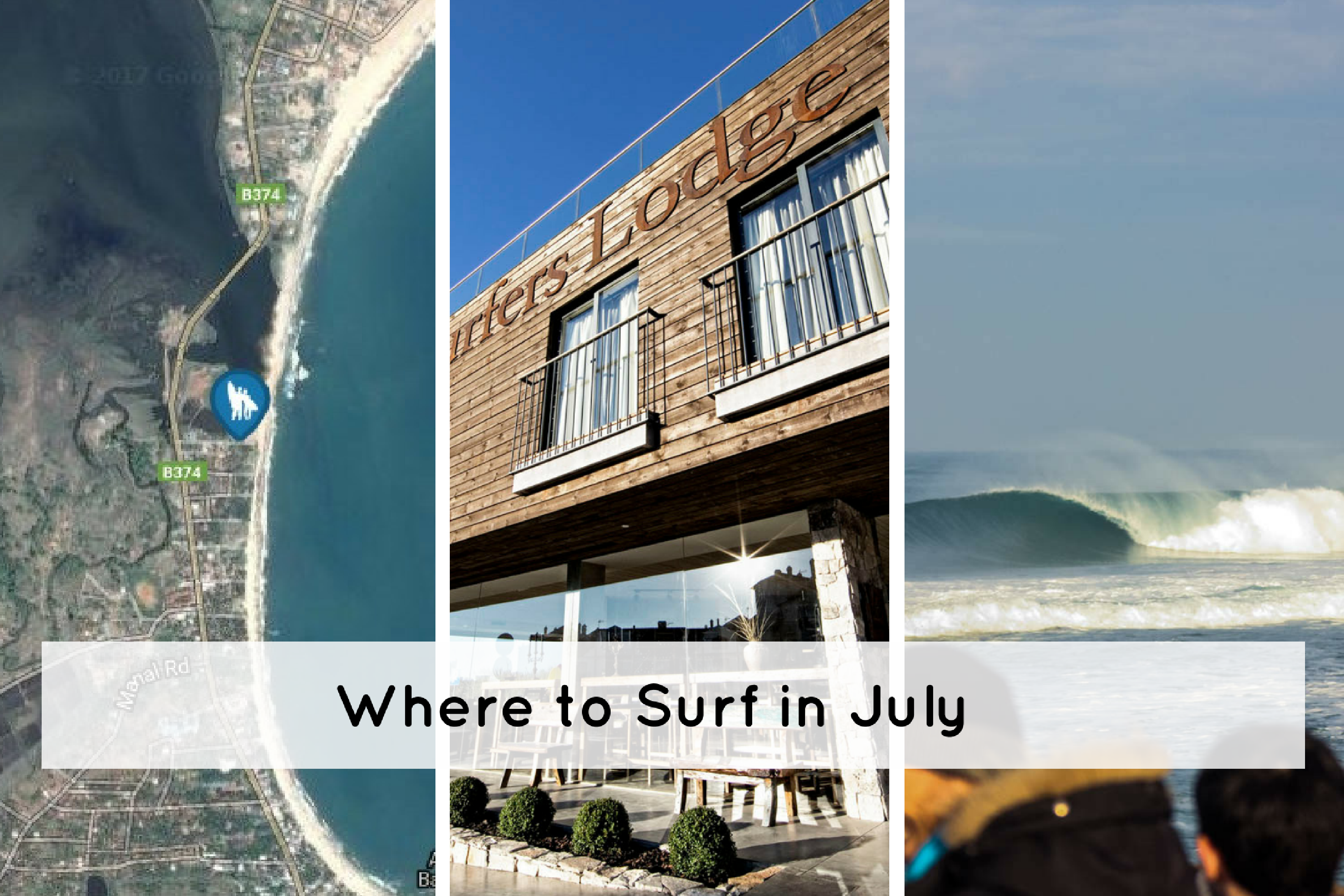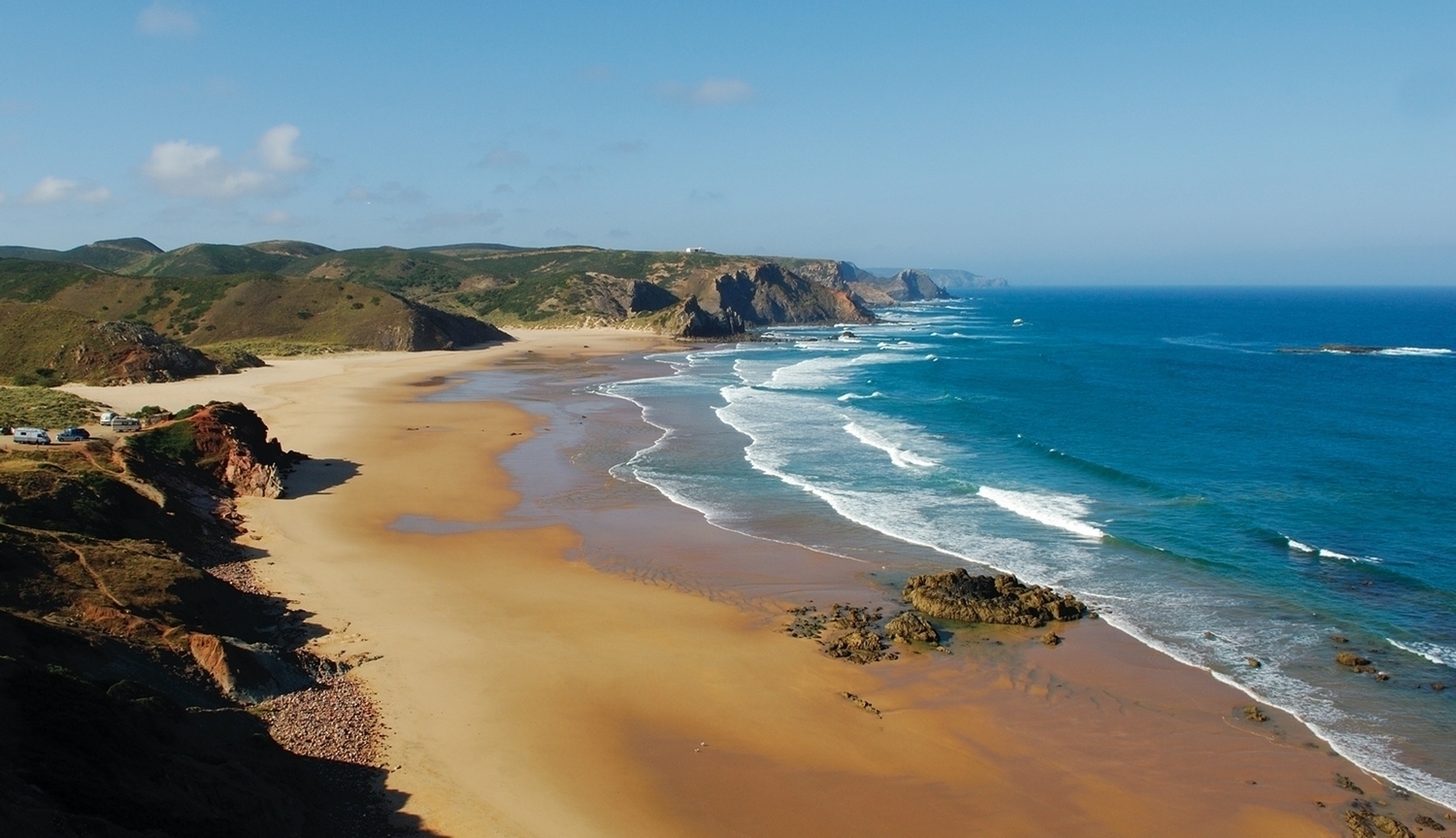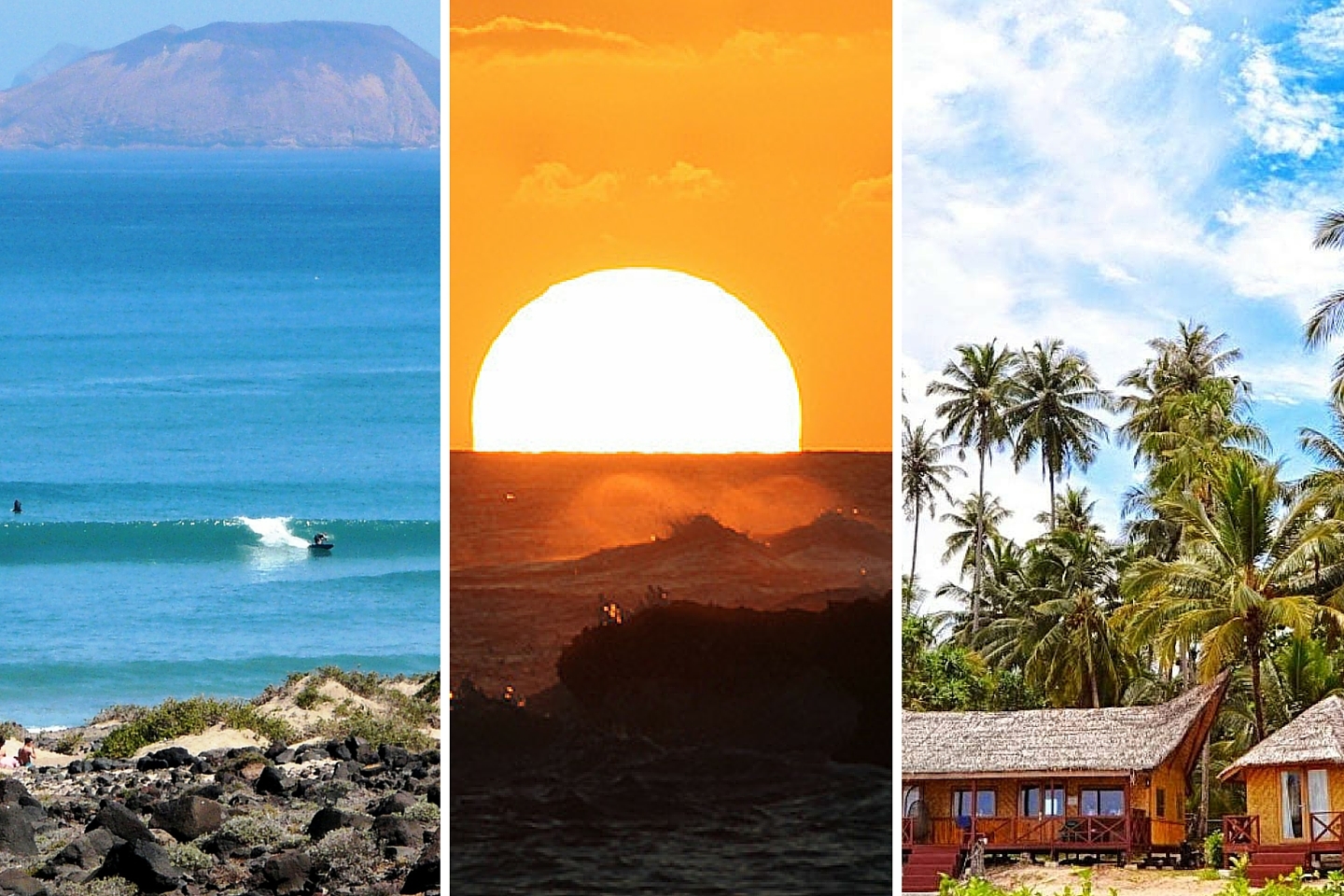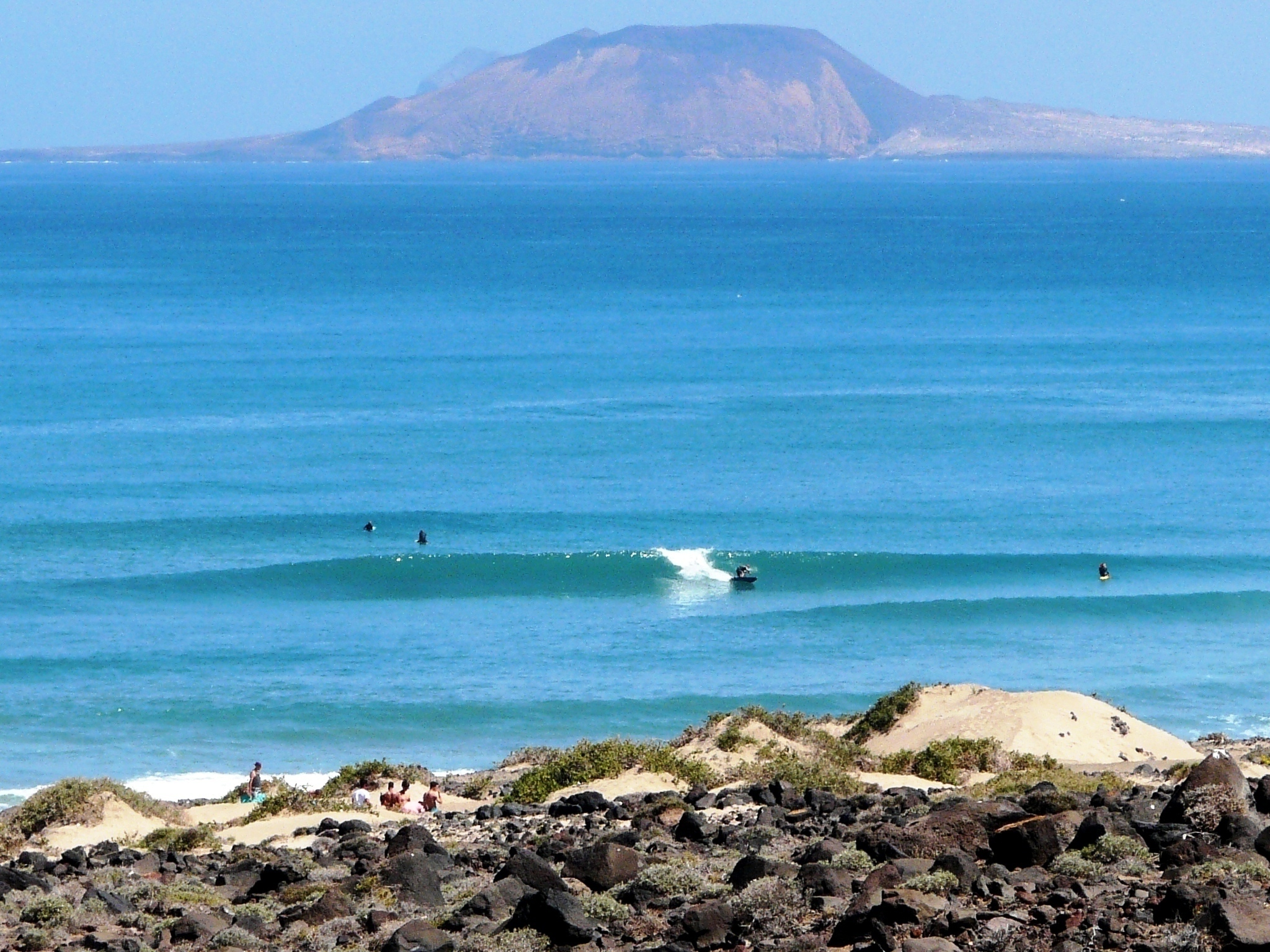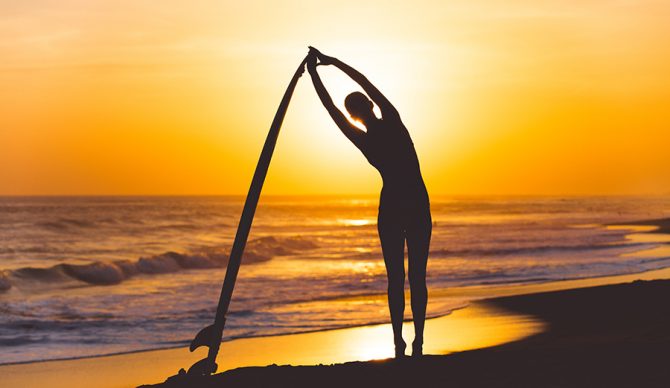Peniche surf spots are driven by a coastline that consistently enjoys strong Atlantic swells coming ashore over a variety of powerful beach breaks, right-hand points and the occasional reef.
The lack of a continental shelf accentuates the massive groundswells ensuring year-round surf and a generous supply of quality waves.
Peniche is essentially a peninsula off the coast of Portugal attached to the mainland by a few bridges and beaches. This shape means that no matter which way the wind is blowing, there is always an offshore wind, so when the swell is right, it is one of the most consistent surf spots in Europe.
We take a look at the 7 essential surf spots in Peniche:
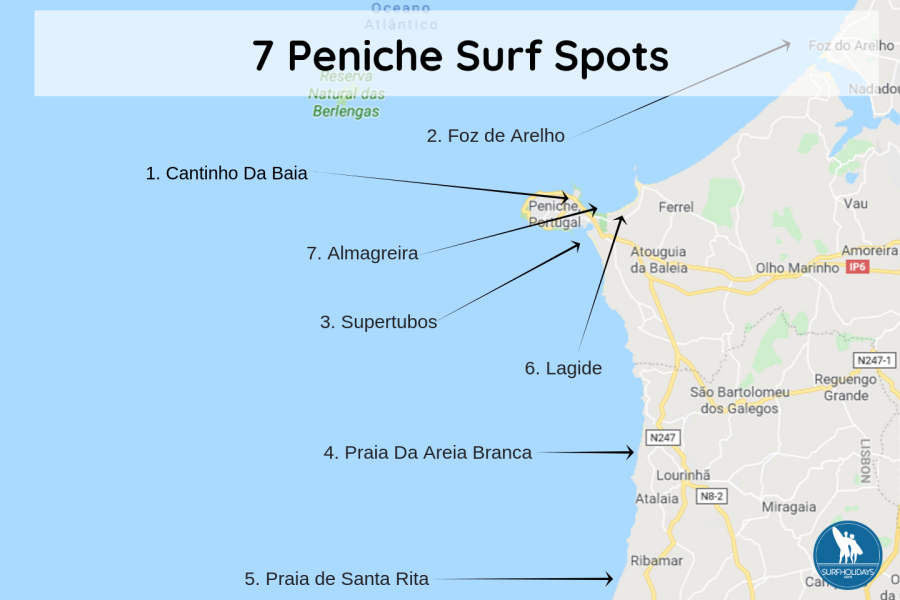
Peniche Surf Spots - Quick Facts:
Best time of year for beginners surf in Peniche: May to September
Best time of year for intermediates surf in Peniche: March to October
Best time of year for advanced surf in Peniche: September to March
Getting to Peniche: Peniche is an hour drive up the coast from Lisbon airport.
With easy and affordable access, world-class waves, and a climate to die for, there are few places to rival Portugal for a surf trip. We break down some of the best places to consider when planning a Portugal surf holiday.
1) Cantinho Da Baia
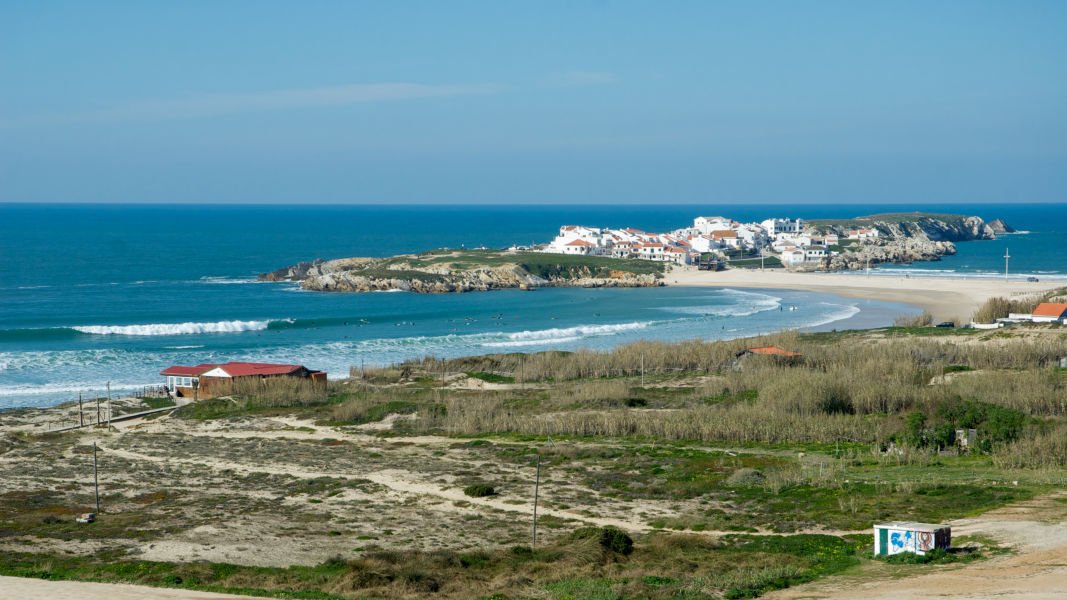
A beautiful stretch of white sand, this area is one of the most consistent of all the Peniche surf spots for beginners. Cantinho Da Baia scoops up every ounce of energy heading coastwards and is rarely without waves.
A long flat shoreline with plenty of peaks up and down the beach, this is the perfect place to indulge in a surf lesson. For those with more experience, a point break comes alive in periods of bigger swell, ideal for mastering surfing’s more complex manoeuvres.
Wave type: Right and left beach break
Bottom: Sand
Tide: All tides
Swell: NW
Wind: E
Length of wave: 150m
Wave height: 2-8 feet
Surfer ability: Beginner, intermediate and advanced
Most popular choice for surfing close to Cantinho Da Baia:
2) Foz do Arelho

A large stretch of sand just north of Peniche, this swell magnet of a beach offers year-round waves for surfers of all abilities. Rideable at any state of the tide, Foz do Arelho is always a great place to head for when searching for quality waves.
Popular with surf schools due to the accessibility into the lineup, the ample peaks on offer nicely spread the crowds, giving everyone plenty of space to enjoy the water.
Wave type: Right and left beach break
Bottom: Sand
Tide: All tides
Swell: SW-N
Wind: E
Length of wave: 150m
Wave height: 2-8 feet
Surfer ability: Beginner, intermediate and advanced
Most popular choice for surfing next to Foz do Arelho:
3) Supertubos
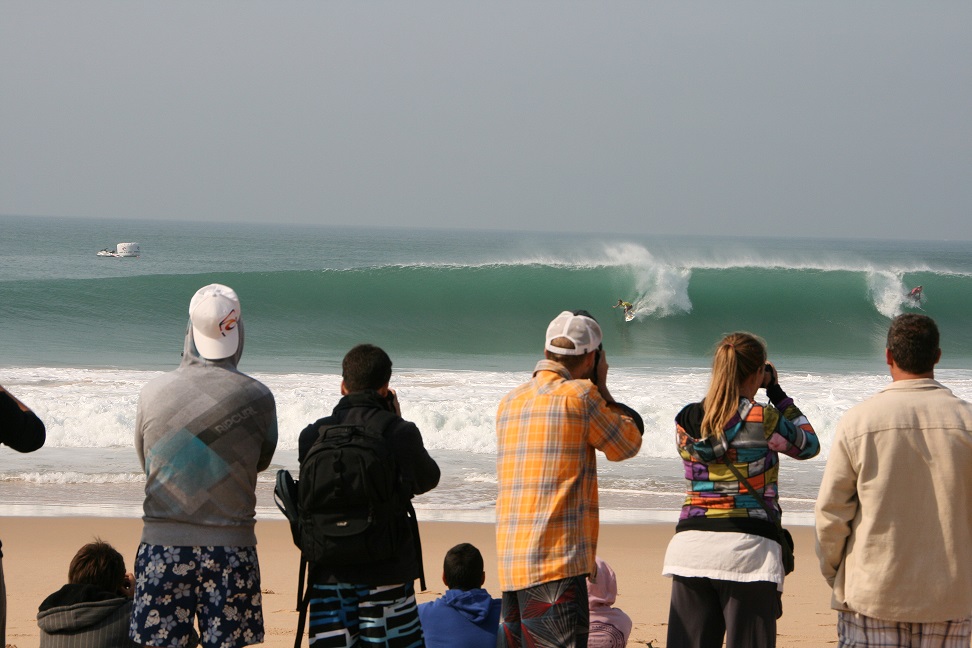
Perhaps the biggest name in European surfing, this is the ultimate destination for many wave riders, and home t the Rip Curl Pro Portugal every October (a great time to go). The large Atlantic storms unload onto this unsuspecting corner of Portugal, delivering hollow barrels that eject spray and air with enough ferocity to topple you from your board.
Fast, cavernous pits that would look more at home on the North Shore of Hawaii endlessly make their way to the shore, challenging surfers to beat the drop and tuck into the barrel.
The sandy seabed is some consolation, but when it’s big, this is a wave that demands the ultimate respect. The peak breaks both left and right, but the deepest and longest tube rides are usually reserved for those going left.
As you might expect at such an infamous spot, facilities are plentiful, so if you’re not able to get in the water, sit back and admire the action unfolding in front of you.
Don’t be put off by the reputation of the place, this is still a great spot to learn to surf, the less powerful whitewash that consistently rolls through is fantastic for practising getting to your feet on a surfboard.
Wave type: Right and left beach break
Bottom: Sand
Tide: Mid-tide is best
Swell: SW
Wind: NE
Length of wave: 200m
Wave height: 2-12 feet
Surfer ability: Beginner (sometimes!), intermediate and advanced
Most popular choice for surfing next to Supertubos:
4) Praia Da Areia Branca
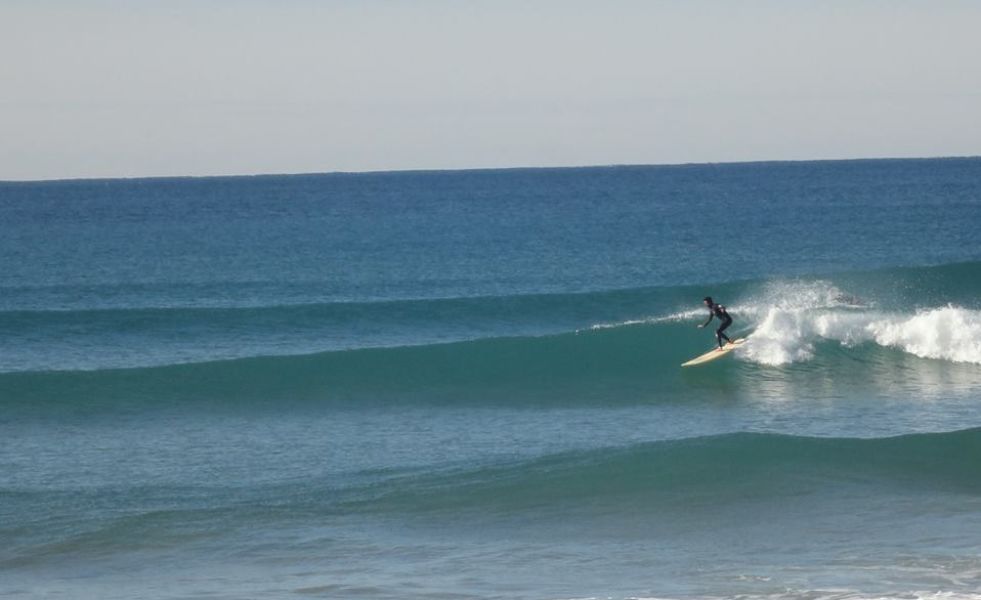
Whilst the consistent Atlantic swells can be a godsend, sometimes their ferocity can all be a bit much. For a more mellow and less crowded surfing experience, the small surf town of Areia Branca, 15 south of Peniche, combines a quieter taste of Portuguese culture with a super fun wave.
Whilst gathering slightly less swell than the spots north of Peniche, this can be a wave to head for when other beaches get either too big or too busy. And when you’ve finished in the water, you can drop into some of the cafés lining the promenade for well-deserved refreshments.
Wave type: Right and left beach break
Bottom: Sand
Tide: All tides
Swell: SW-N
Wind: E
Length of wave: 150m
Wave height: 2-8 feet
Surfer ability: Beginner and intermediate
Most popular choice for surfing next to Areia Branca:
5) Praia de Santa Rita
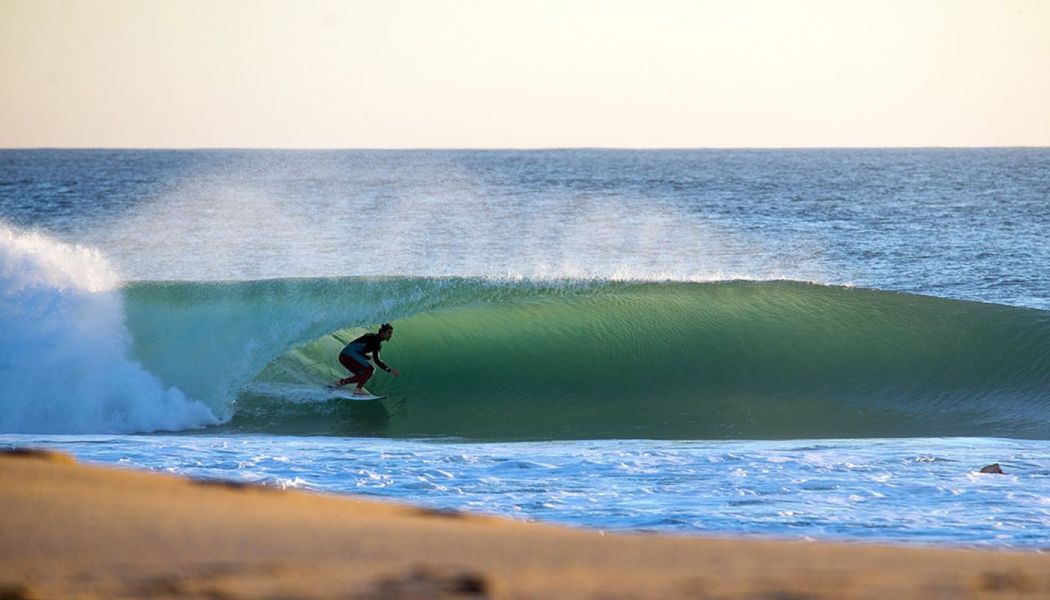
Another quality Portuguese beach break that has kept relatively under the radar, partly due to its more southerly location, on its day, Praia de Santa Rita has been known to throw up a few barrels
The natural headland at the north of the beach keeps the sand from shifting, allowing quality peaks to form along the length of the shore. Waves consistently break left and right and are almost certainly guaranteed to be quieter than Supertubos and the rest of Peniche. If the swell and wind align, this could be the only place to head for.
Wave type: Right and left beach break
Bottom: Sand
Tide: Mid-tide is best
Swell: SW-N
Wind: E
Length of wave: 150m
Wave height: 2-8 feet
Surfer ability: Beginner, intermediate and advanced
Most popular choice for surfing next to Santa Rita:
6) Lagide
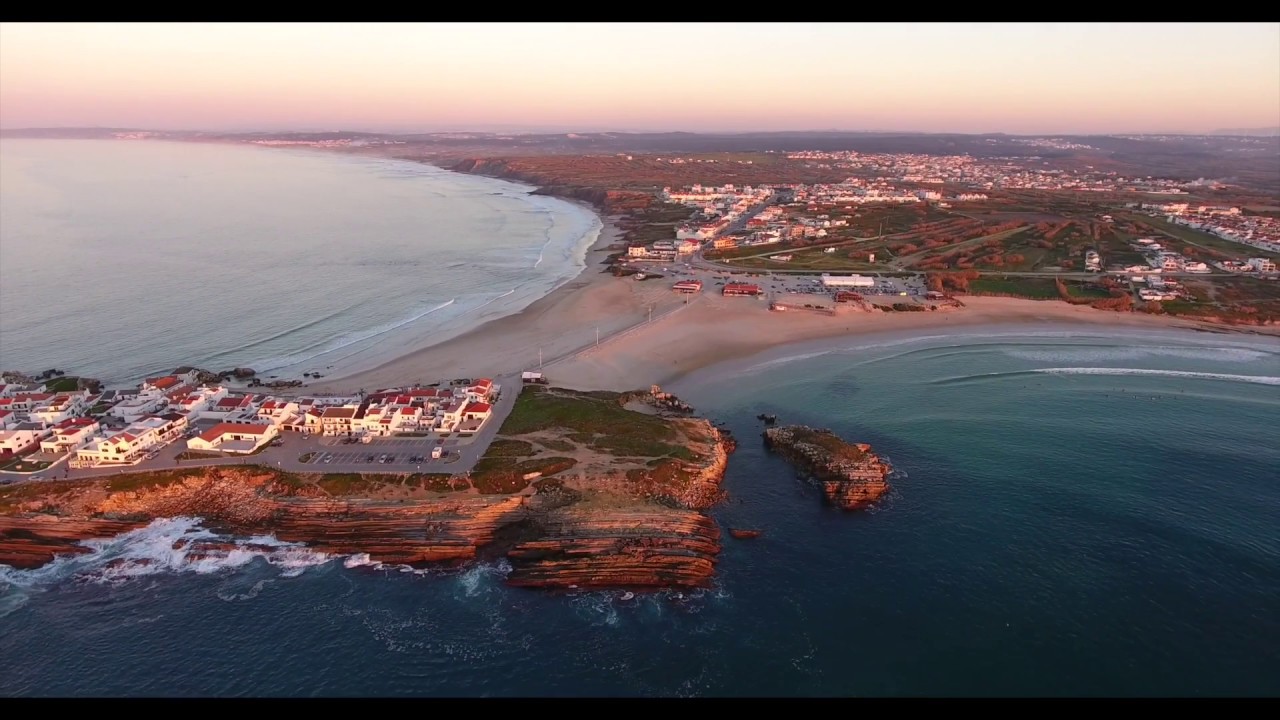
Largely recognised as the best spot on the northern side of Peniche, in Baleal. It is on the other side of Cantinho Da Bahia.
This left-hand reef is offshore in a southerly wind. It’s unusually mellow for a reef break with a gentle take-off and long rides, the only downside is that because it is so easily accessible is can get a little busy in the water.
Low tide is a touch shallow and the wave backs off when the water is at its highest. Reef boots are not a ridiculous idea here, especially for beginners, as there are always the odd urchin scattered around the rocks. Centrally located so access, accommodation, and facilities are aplenty.
Wave type: Left-hand reef
Bottom: Reef
Tide: Mid-tide
Swell: N (although anything from SW round to N funnels its way in)
Wind: S
Length of wave: 150m
Wave height: 2-10 feet
Surfer ability: Beginner, intermediate and advanced
Most popular choice for surfing close to Lagide:
7) Almagreira
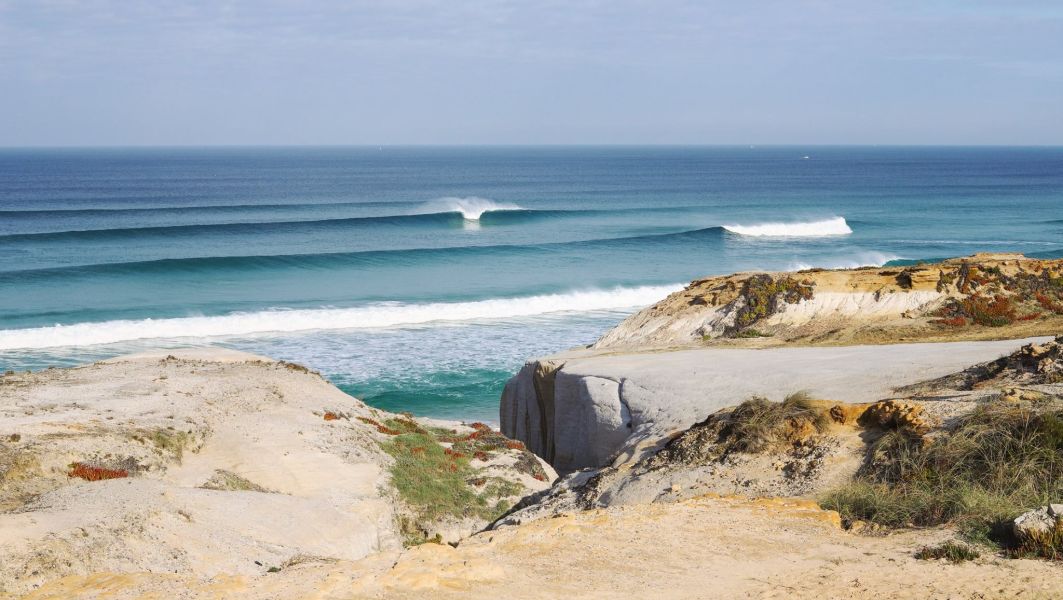
A beach so long that it is impossible not to find something to ride. Waves disappear off into the distance as they reach Foz do Arelho, so finding your very own peak is not out of the question.
Ultra consistent and surfable on any tide, this is a perfect place to set up camp for a whole day of surfing. As good for those learning to surf at it is for those with years of experience under their neoprene belts.
Wave type: Left and right beach break
Bottom: Sand
Tide: All tides
Swell: SW-N
Wind: E
Length of wave: 150m
Wave height: 2-8 feet
Surfer ability: Beginner, intermediate and advanced
Most popular choice for surfing close to Almagreira:
----
Weather in Peniche: Hot summers and mild winters make Portugal, and in particular Peniche, a year-round surfing destination
Water temperature in Peniche: A summer suit will be more than adequate up until November, in the cooler months slightly thicker rubber might be necessary.
Peniche is considered the capital of the Portuguese surf scene. With more than 30 different breaks in the surrounding area, wave riders are spoilt for choice when deciding where to surf. Sitting just 90 kilometres north of Lisbon, it takes no time at all to blast up the coast to the home of surfing in Portugal.
Home to a great mix of Peniche surf camps, beach bars and cafés, the area is more centred around the beach and surf scene; it doesn't have the same old town charm that Ericeira does or the fancy style of Cascais, but sometimes that is not a bad thing!




 Tom Keyes
Tom Keyes

